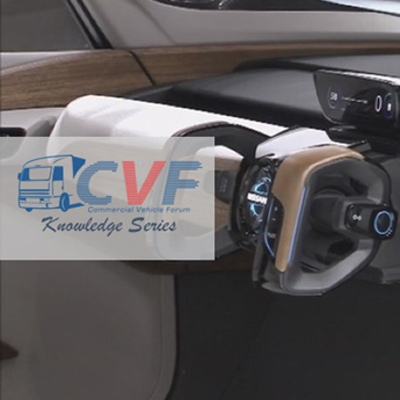Enhancing Automotive Safety: 5 Essential Automotive Accessories in the U.S
Introduction
In the fast-paced world of automotive technology, safety remains a top priority for both manufacturers and consumers. As vehicles become more advanced, so do the automotive accessories designed to enhance their safety features. In the U.S., where the automotive industry plays a pivotal role, a range of essential safety-enhancing automotive accessories has emerged to provide drivers with added protection on the road.
1. Backup Cameras:
One of the most crucial safety-enhancing automotive accessories in the U.S. market is the backup camera. As of May 2018, all new passenger vehicles sold in the United States are required to have a backup camera system, making it a mandatory addition to automotive safety. This essential automotive accessory provides drivers with a clear view of what's behind the vehicle, minimizing the risk of accidents when reversing and reducing the potential for collisions with pedestrians or obstacles.
The backup camera system typically includes a camera mounted at the rear of the vehicle and a display screen on the dashboard or rearview mirror, allowing drivers to see the area directly behind the vehicle. This real-time visual feedback aids drivers in navigating tight spaces, parking, and reversing with greater confidence.
The significance of backup cameras in enhancing automotive safety cannot be overstated. These accessories have proven to be effective in preventing accidents caused by blind spots, especially in situations where rear visibility is limited. Children, pets, and small objects are often difficult to see in the rearview mirrors alone, making backup cameras an invaluable addition to vehicles.
| Also Read: A Comprehensive Guide to Automotive Accessories for Your Vehicle |
The introduction of backup cameras as a standard automotive accessory has resulted in a notable reduction in backup-related accidents. According to the National Highway Traffic Safety Administration (NHTSA), backup cameras have the potential to save lives and prevent injuries by providing drivers with a clearer view of their surroundings. By incorporating this technology, the U.S. automotive industry has taken a significant step toward enhancing vehicle safety and minimizing the risk of accidents, especially in scenarios where drivers need to navigate in reverse.
| Also Read: Exploring the Latest Trends in Automotive Accessories |
2. Blind Spot Monitoring
Blind spot monitoring systems have gained significant popularity as essential automotive accessories in the U.S. market due to their ability to address a common driving challenge. These automotive accessories use sensors strategically placed around the vehicle to monitor the areas that are typically not visible to the driver, commonly known as blind spots. By doing so, they provide a valuable layer of safety and awareness.
In the U.S., where the automotive industry is driven by a commitment to vehicle safety, blind spot monitoring systems have become a key component in reducing accidents caused by lane changes and mergers. The sensors detect the presence of other vehicles in adjacent lanes and alert the driver through visual indicators on the side mirrors, audible warnings, or even haptic feedback in the steering wheel.
Blind spot monitoring technology enhances driver awareness and helps prevent potentially dangerous situations, such as collisions resulting from unintentional lane departures. This automotive accessory is especially beneficial on highways and busy roads where quick lane changes are common.
By addressing one of the most challenging aspects of driving – the limited visibility in certain areas around the vehicle – blind spot monitoring systems contribute significantly to road safety in the U.S. These accessories not only reduce the likelihood of accidents but also promote safer driving behaviors by encouraging drivers to double-check their blind spots before changing lanes.
As the demand for safer vehicles continues to rise, blind spot monitoring has become a sought-after feature in new car models. Automakers in the U.S. recognize the importance of these accessories in enhancing automotive safety and are increasingly integrating them into their vehicles as standard or optional features.
3. Lane Departure Warning and Prevention
Lane departure warning and prevention systems have emerged as essential automotive accessories in the U.S., playing a critical role in enhancing driver safety and preventing accidents caused by unintended lane drifting.
| Also Read: Enhance Your Drive: Innovative Automotive Accessories You Need |
In the dynamic landscape of the U.S. automotive industry, where innovation meets safety, lane departure warning and prevention systems have garnered significant attention. These cutting-edge accessories utilize advanced cameras and sensors to monitor the vehicle's position within the lane. If the system detects any signs of unintended lane departure without the use of turn signals, it promptly alerts the driver through a combination of visual, audible, or even haptic signals.
The inclusion of lane departure warning and prevention systems is a testament to the commitment of the U.S. automotive sector to reducing accidents and promoting safer driving practices. This technology is particularly effective in addressing scenarios where driver fatigue, distraction, or momentary lapses in attention can lead to unintentional lane shifts.
Furthermore, some advanced systems not only provide warnings but also take proactive measures to prevent lane departure. These systems can apply gentle steering corrections or brake inputs to guide the vehicle back into the correct lane. This not only mitigates the risk of collisions with other vehicles but also helps prevent accidents involving road departures.
Lane departure warning and prevention systems are highly versatile and adaptable, catering to different driving environments and conditions. Whether on highways, city streets, or winding roads, these accessories contribute to maintaining a steady and safe trajectory for the vehicle.
As a testament to their importance, many automakers in the U.S. have embraced lane departure warning and prevention systems, integrating them into their vehicle lineup. This proactive approach aligns with the industry's commitment to offering advanced safety features that empower drivers with the tools needed to stay safe on the road.
4. Collision Avoidance Systems
Collision avoidance systems have become indispensable automotive accessories in the U.S. market, revolutionizing vehicle safety by using advanced technologies to detect potential collisions and take preventative actions.
In the U.S. automotive industry, where safety innovations hold paramount importance, collision avoidance systems stand out as essential accessories that embody this commitment. These systems integrate various sensors, cameras, and radar technologies to monitor the vehicle's surroundings and assess potential collision risks.
Forward collision warning systems, a key component of collision avoidance, use these sensors to constantly measure the distance between the vehicle and objects ahead. If the system determines that a collision is imminent, it provides the driver with timely warnings through visual and audible cues, enabling the driver to take corrective action.
One of the defining features of collision avoidance systems is automatic emergency braking (AEB). When a driver does not respond to the warnings quickly enough, AEB takes over and applies the brakes autonomously to mitigate the severity of a collision or even prevent it entirely. This innovative feature showcases the U.S automotive industry's commitment to proactively addressing collision risks.
Collision avoidance systems are particularly effective in scenarios where the driver's reaction time may be insufficient to prevent an accident, such as sudden stops by the vehicle ahead. By doing so, these essential accessories bolster safety measures and substantially reduce the occurrence of rear-end collisions.
Automakers in the U.S. have embraced collision avoidance systems, incorporating them as standard or optional features in many vehicle models. This widespread adoption underscores the industry's recognition of the pivotal role these accessories play in preventing accidents and ensuring safer roadways.
5. Tire Pressure Monitoring Systems (TPMS)
Tire Pressure Monitoring Systems (TPMS) have emerged as essential automotive accessories in the U.S. market, revolutionizing vehicle safety by ensuring optimal tire pressure and enhancing overall driving performance.
In the dynamic landscape of the U.S. automotive industry, where safety and efficiency converge, TPMS has become a crucial component. These systems utilize sensors placed within each tire to continually monitor the air pressure levels. If the system detects that a tire's pressure has fallen below the recommended level, it promptly alerts the driver through dashboard indicators or other notifications.
Maintaining proper tire pressure is not only vital for safe driving but also significantly impacts fuel efficiency and tire longevity. The introduction of TPMS as a standard automotive accessory underscores the industry's commitment to enhancing safety while also optimizing vehicle performance.
TPMS addresses a common safety concern – underinflated tires. Such tires can lead to reduced traction, compromised handling, and even blowouts, especially during high-speed driving. By alerting drivers to low tire pressure, TPMS aids in preventing accidents caused by tire-related issues and promotes safer driving practices.
In the U.S., where road safety is a top priority, TPMS has gained widespread recognition and acceptance. Many vehicles now come equipped with this essential accessory, reflecting the industry's commitment to ensuring that drivers have the necessary tools to maintain their vehicles in optimal condition.
Moreover, TPMS contributes to reducing the environmental impact of vehicles by optimizing fuel efficiency. Properly inflated tires lead to better gas mileage, lowering carbon emissions and aligning with the U.S. automotive industry's drive toward sustainability.
Conclusion
In the U.S. automotive industry, safety is paramount. Essential automotive accessories, such as backup cameras, blind spot monitoring, lane departure systems, collision avoidance tech, and Tire Pressure Monitoring Systems (TPMS), have redefined safety standards. These innovations enhance driver awareness, prevent accidents, and optimize vehicle performance. From preventing blind spot collisions to maintaining proper tire pressure, these accessories exemplify the industry's dedication to road safety and efficiency. As the industry evolves, these accessories continue to play a vital role in fostering a safer driving environment, reflecting the industry's commitment to ensuring secure and responsible journeys on U.S. roads.



